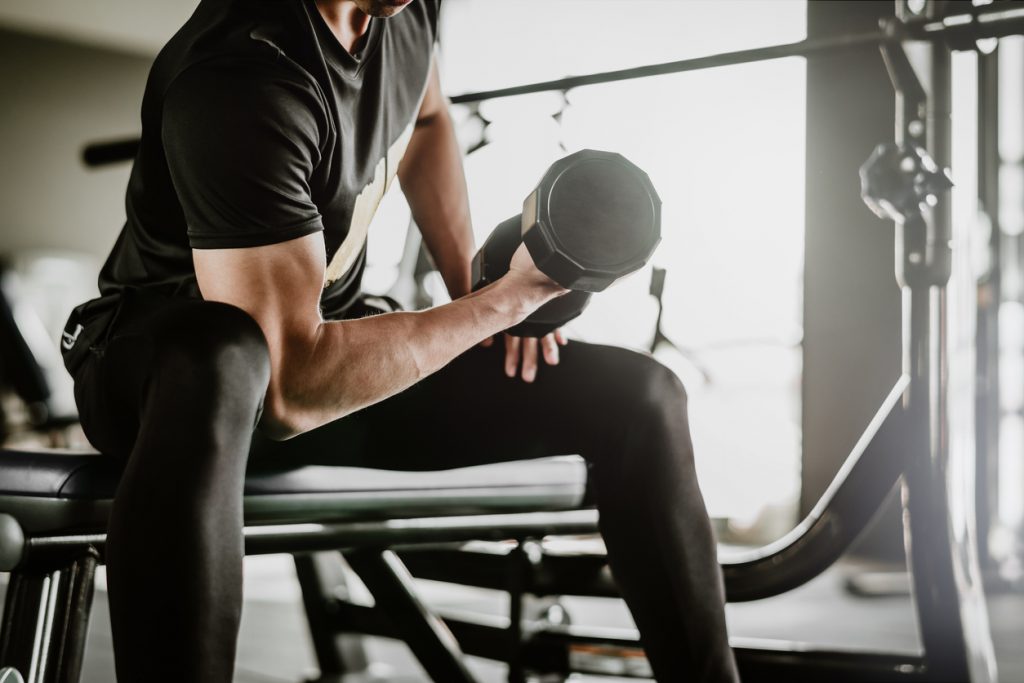When we move, a complex structure of levers systematically comes into play. These levers work together and ensure that our movements are efficient and smooth. The skeletal movements we perform are activated by action muscles, commonly called "agonist muscles".
These muscles mobilise to produce a contraction and the resulting mobility of the skeletal lever. The agonist muscles work together with the antagonist muscles, which perfect the movement of the agonist muscles by moving in the opposite direction. During the execution of the movements, many muscle groups are used: the antagonist muscles.
What are agonist and antagonist muscles?
The way muscles work is very simple: when one muscle is contracted, the other relaxes: the first acts, and the second suffers. In simple terms, the muscle used to contract during a movement is the agonist, the one that is stretched is the antagonist. Take the example of the biceps: during the movement, it is the muscle used to contract; the triceps then becomes the antagonist muscle, as it is the one that is stretched. However, an agonist muscle is not fixed in this role, it can also become an antagonist depending on the action you choose during your training.
It is important to know how the muscles work during a movement, as this will make it easier to choose the exercises to strengthen, depending on your objective. Muscle builders are not always aware that every exercise, every movement, even those that seem trivial, have an effect on the general condition of their body. Hence the importance of understanding muscle synergy.
How to train antagonistic muscles in supersets?
You are convinced of the benefits of superset training and are now wondering what the main antagonistic muscles are?
Here is a small example of the most common ones.
Biceps / Triceps
Pectorals / Latissimus dorsi
Quadriceps / Ischio
Abductor
/ Adductor
As we have already mentioned several times, the antagonistic muscles work in complementarity. It is therefore necessary that both muscles are worked in the same way. Therefore, for a good balance of strength, you should not favour one muscle over another.
You can, for example, link two exercises by alternating the muscle involved. If during the first series you have engaged the biceps, during the second series work the triceps. In short, alternate agonist and antagonist muscles.
An imbalance between the strength of the muscles could alter the quality and stability of the joint. This can also have serious consequences for the overall aesthetics of your muscles.
Training the antagonist muscles in the form of supersets: what are the advantages?
The famous Austrian-American actor and bodybuilder Arnold Schwarzenegger made superset training famous in the 1970s. This intensive technique has a reputation for being effective in building muscle in record time. At first glance, therefore, these are not exercises designed to promote muscle balance. The main advantages of this famous method are :
- The blatant stimulation of intramuscular metabolic stress. This promotes muscle development. Since the muscles are not used to being stressed so intensively, this will boost them in a positive way.
- The increase in peak testosterone. In fact, compared to a classic training for the same volume of exercise, supersets favour the accumulation of testosterone.
- A significant time saving. Supersets give the opportunity to have a high volume of work, while reducing the time spent training. It is a solution to consider for all athletes who want to achieve quick results in a short time.
The study by Dr Daniel Robbins in 2010
It should be noted that the superset programme has led to numerous scientific studies. In 2010, a study conducted by Dr. Daniel Robbins proved the effectiveness of timing management in superset.
In his experiment, Dr. Robbins divided 16 male weight trainers into two groups: the first group doing traditional training, and the second group with the superset technique. The results showed that in the face of time reduction, supersets did not alter the quality of training as assessed by electromyography.
Dr Dean's 2005 study
Similarly, it has been theorised that alternating exercises that work antagonistic muscles has a satisfactory effect on muscle formation. In an observation made by Dr Dean in 2005, 25 rugby players were divided into an experimental group and a control group.
These players performed a power test on a flat bench. The experimental group were asked to alternate muscles in a bench press, while the control group worked a single muscle until the end of the training. The results were very clear: the muscle power of the people in the experimental group had increased by 4.7%, while no change was noticed in the control group. This study therefore proves the importance of alternating the two antagonist/agonist muscles in order to develop muscle power.
Dr. Kelleher's study in 2010
Let's also take a look at the experiment conducted by Dr. Kelleher in 2010 on energy expenditure following superset training. In this experiment, 5 people underwent superset training and another group did traditional training. During the 60-minute training sessions, the oxygen consumption and the lactic acid concentration in the blood of the athletes were measured at the end of the session.
The conclusion of this experiment was not surprising. It revealed that the energy expenditure of superset users during training was significantly higher than that of traditional trainers. So this study proves once again the effectiveness of superset training. If you want to burn energy in a short period of time, superset training is the right thing for you!


